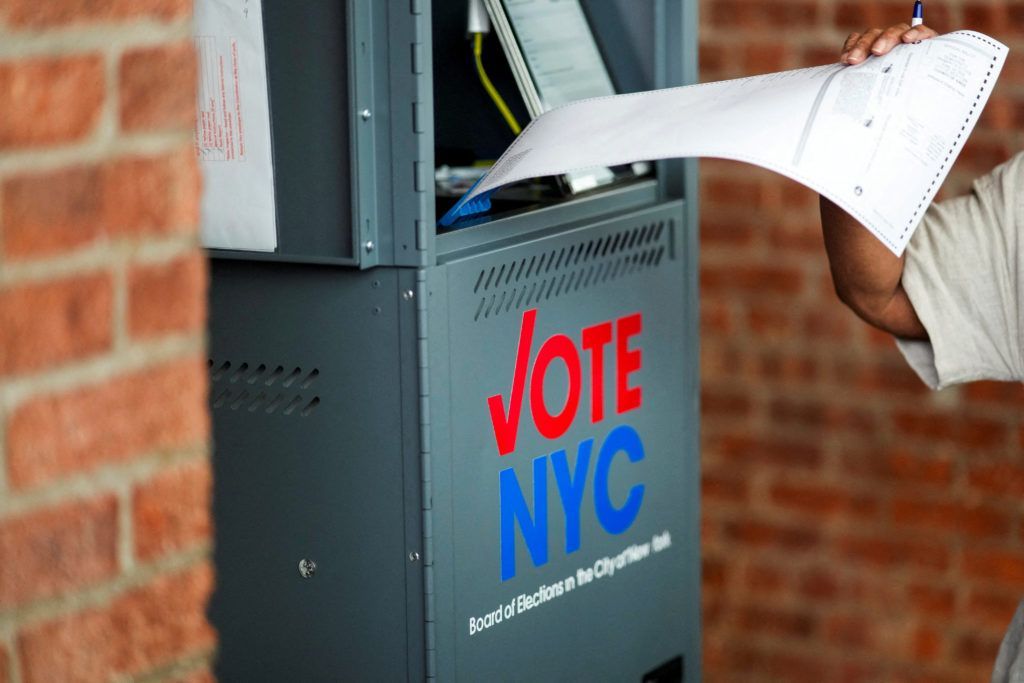NYC’s Ranked-Choice Voting System Faces Scrutiny After Mayoral Upset
NYC’s Ranked-Choice Voting System Faces Scrutiny After Mayoral Upset

New York City’s recent mayoral primary has reignited debate over the city’s use of ranked-choice voting (RCV), a system designed to foster consensus but now raising serious concerns about fairness, clarity, and voter representation.
In theory, RCV empowers voters to express a wider range of preferences. In practice, it may be delivering election outcomes that diverge from the will of the majority.
The Front-Runner Who Didn't Win
In the 2025 Democratic primary, former Governor Andrew Cuomo finished first in initial vote tallies. Yet he ultimately lost the nomination to State Assembly member Zohran Mamdani — a candidate backed by the progressive left who initially trailed in first-choice support.
Thanks to the ranked-choice system, Mamdani surged ahead in later rounds as lower-polling candidates were eliminated and their supporters’ second- and third-choice votes were redistributed. By the final count, he had overtaken Cuomo, securing the nomination.
Supporters of RCV hailed the result as a victory for coalition-building. Critics, however, saw something different: a system where the most popular first-choice candidate can be edged out by accumulated lower-rank preferences — a dynamic that some argue distorts voter intent.
How RCV Works — It’s Complicated
Under New York City’s ranked-choice voting rules, voters can rank up to five candidates. If no one receives a majority of first-choice votes, the candidate with the fewest is eliminated. Those ballots are then reallocated based on the next-ranked choice, and the process repeats until one candidate crosses the 50% threshold.
Proponents say the system reduces negative campaigning and mitigates the impact of so-called spoiler candidates. But critics argue that the added complexity can confuse voters and undermine the legitimacy of final outcomes.
The Issue of Exhausted Ballots
One of the most persistent concerns with RCV is the phenomenon of “exhausted ballots.” If a voter’s ranked candidates are all eliminated early in the process, their ballot no longer counts in the final rounds.
This isn’t a rare occurrence. In the 2021 election, more than 140,000 ballots — roughly 15% of the total — were exhausted before the deciding round. A similar pattern emerged in 2025.
In crowded races, many voters struggle to rank five candidates meaningfully. As a result, a significant portion of the electorate may be effectively shut out of the final decision.
Delays Undermine Confidence
Another sticking point is the delay in reporting results. The 2025 primary took nearly a week to produce a final outcome, as election officials processed and re-tabulated votes through each elimination round.
Such delays open the door to confusion, misinformation, and reduced trust in the system. In an editorial, The Washington Post described RCV as “a slow-moving trainwreck dressed up as reform” — a harsh assessment that nonetheless reflects growing unease among voters and officials alike.
Who Is Most Affected?
Perhaps most concerning is how RCV may disproportionately impact communities with less access to civic education. Voters unfamiliar with the ranking process or unsure how to strategically fill out their ballots may unintentionally reduce the power of their vote.
Research has shown that ballot exhaustion and errors are more common in lower-income districts, raising equity concerns about the system’s implementation.
Five Key Takeaways about RCV in New York
- Results take longer, creating opportunities for confusion and misinformation.
- Voters often don’t fully understand how their votes are counted or redistributed.
- Front-runners can lose, even if they lead in first-choice support.
- Exhausted ballots silence thousands of voters by the final round.
- Educational disparities mean some communities are more affected than others.
A System Worth Reconsidering?
While ranked-choice voting may offer benefits in theory, its real-world application in New York City has exposed serious flaws. If the system produces winners who weren't the most popular first choice — and if significant numbers of ballots are discarded before the decisive round — voters are right to ask whether this is the kind of democracy they signed up for.
RCV is likely to remain in place for now. But without greater transparency, education, and reform, critics argue it could do more harm than good — creating elections that appear fair on the surface, yet leave many New Yorkers feeling unheard.
Further Reading
- NYC Votes – Official Ranked-Choice Voting Guide
- The Guardian – Cuomo and Mamdani Face Off
- Washington Post – Opinion: RCV and Its Consequences
